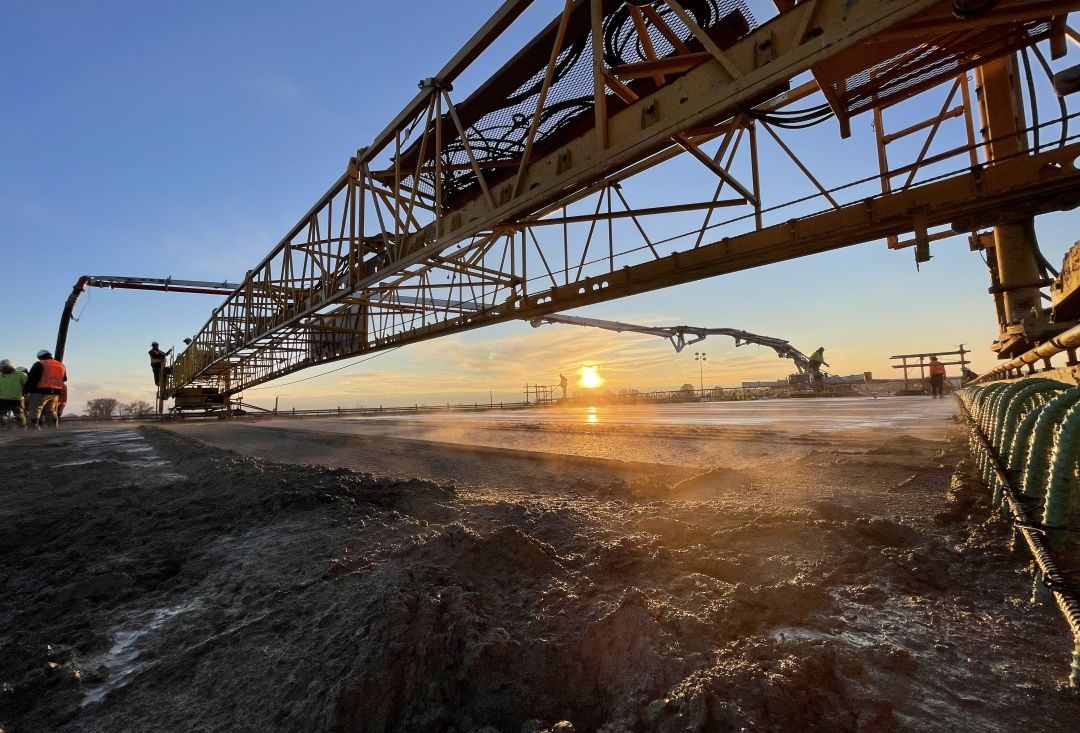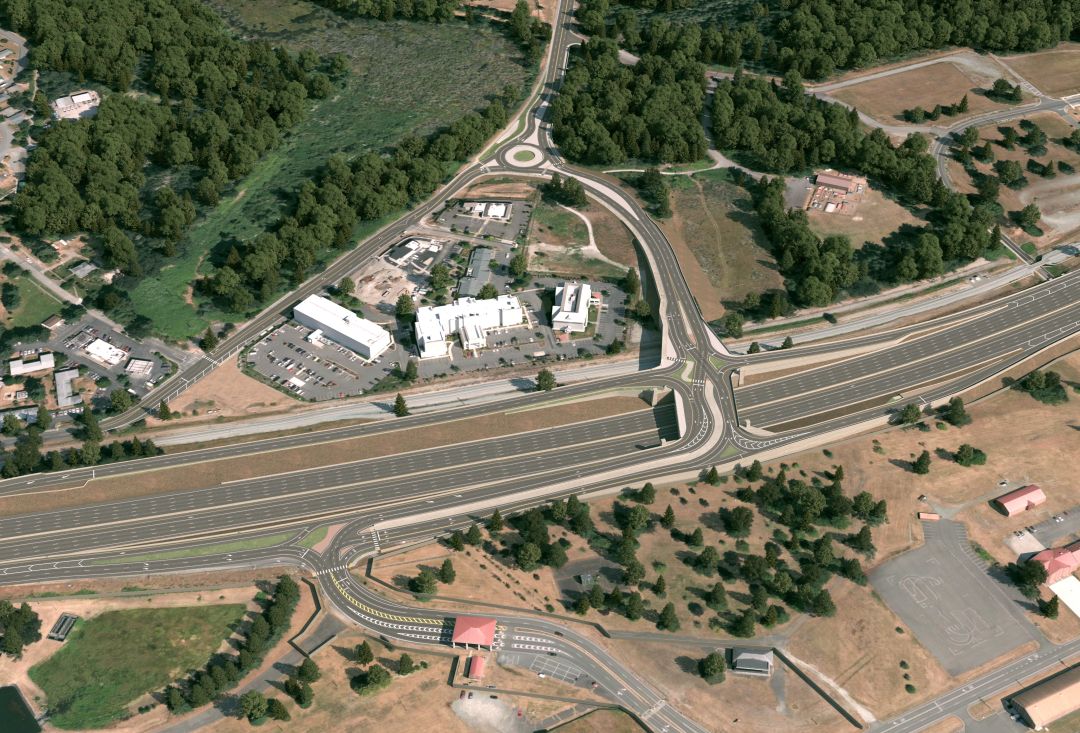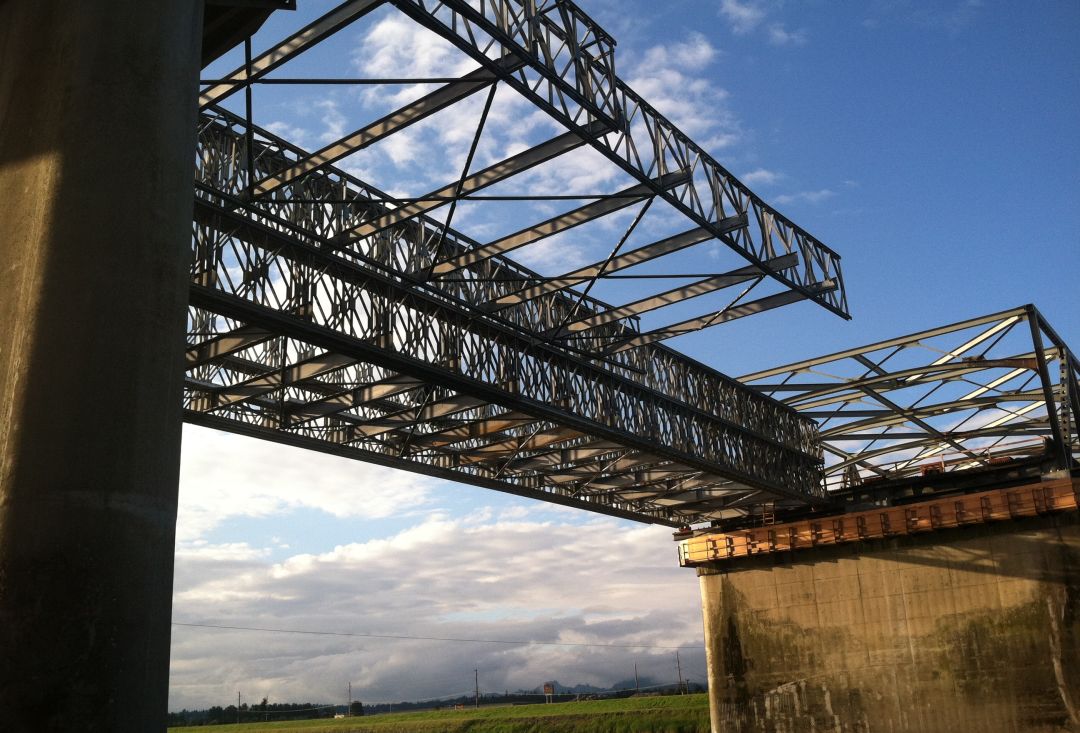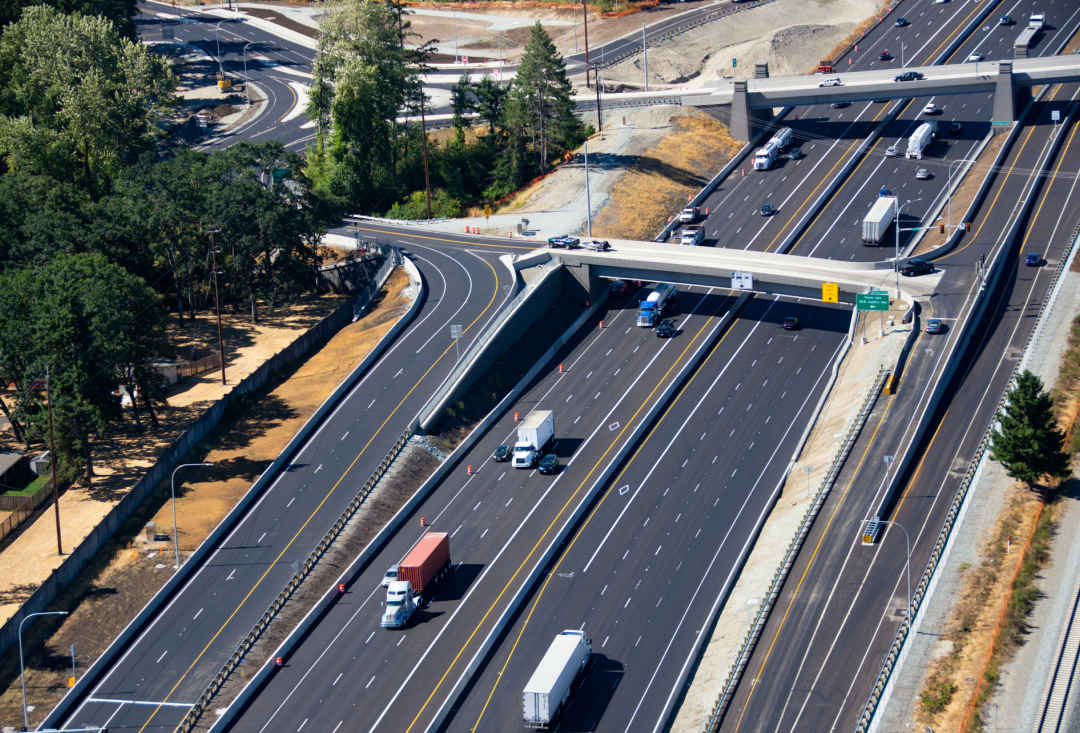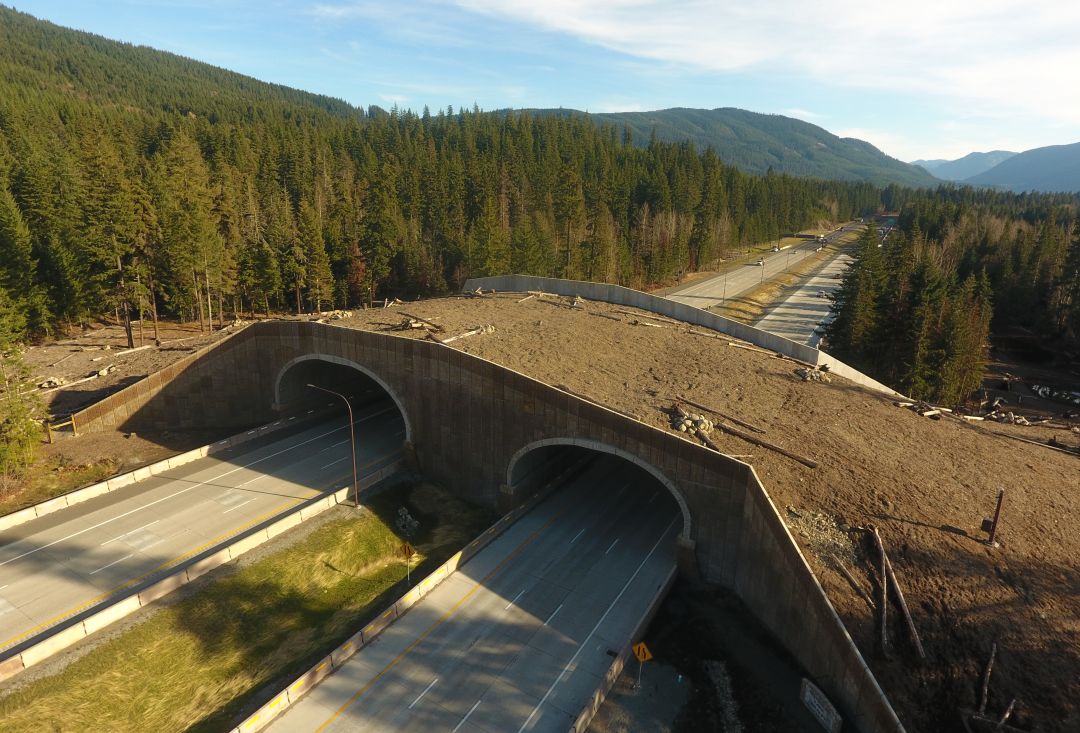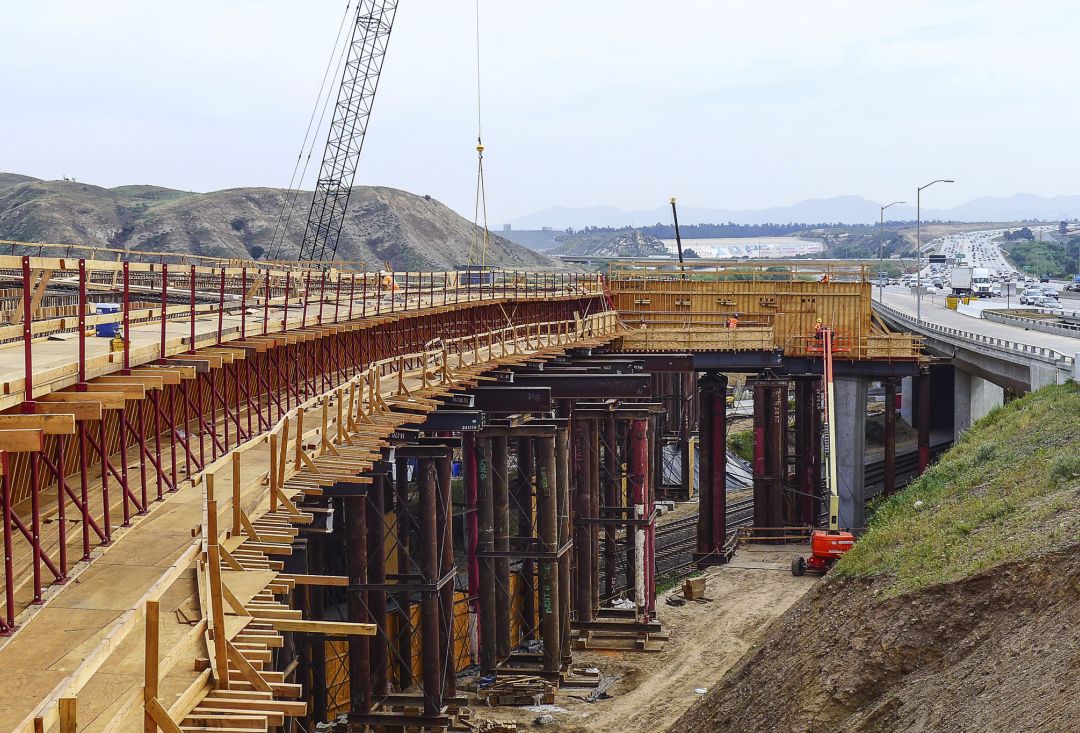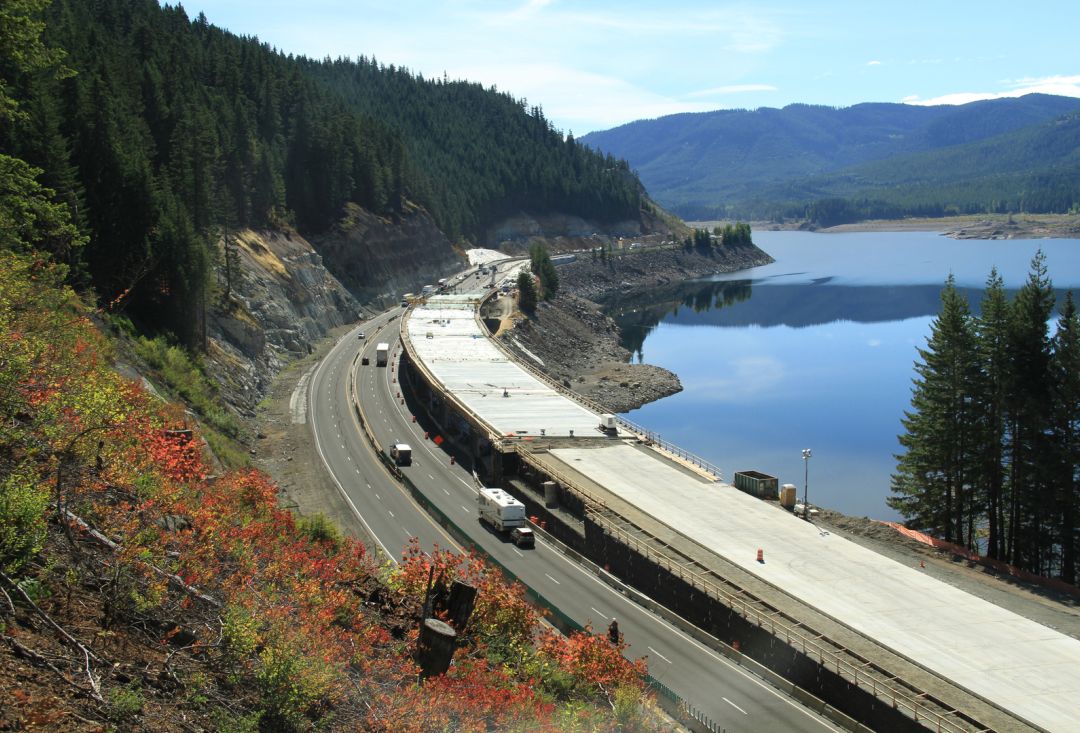Client
Completion Date
Designer
Location
Delivery Method
Division
Contract Value
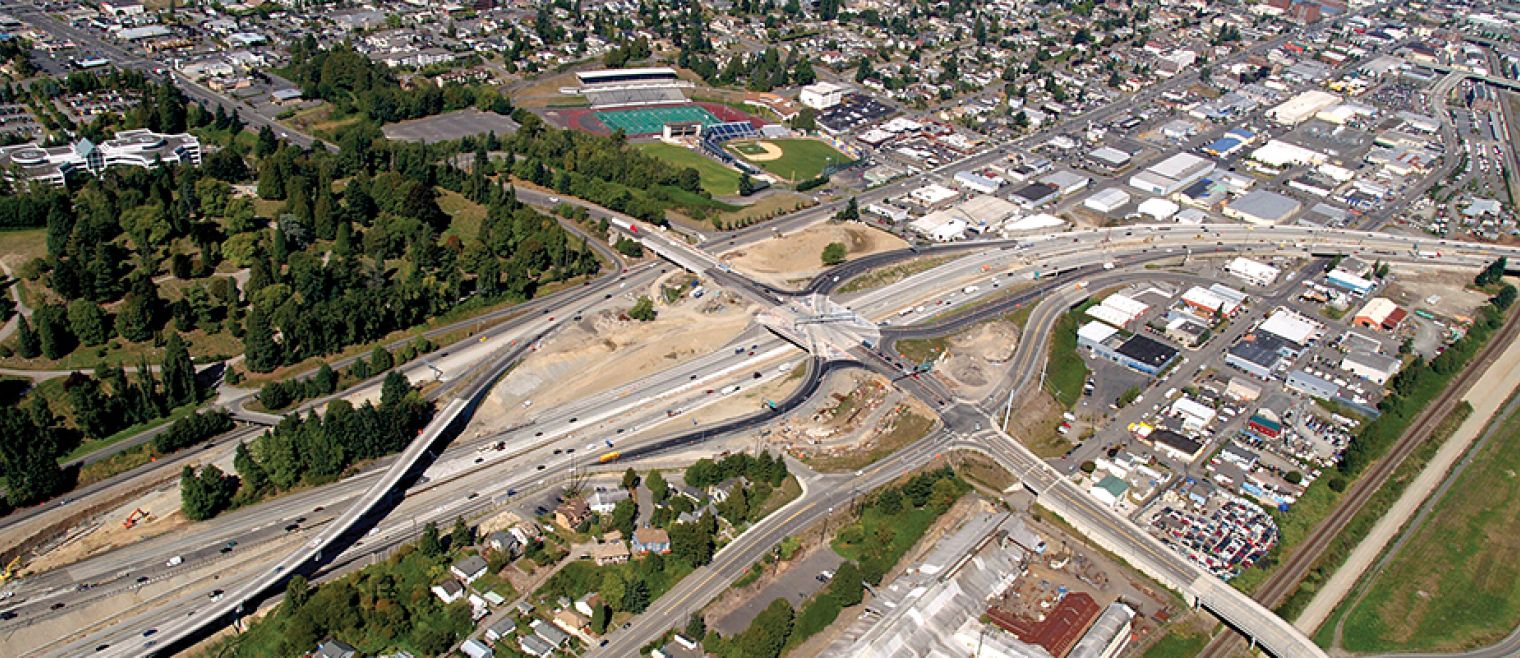
I-5/SR 526 to US 2 – HOV Lanes "Everett HOV" Project adds more than 10 miles of HOV carpool lanes and additional merge lanes through this congested urban corridor. The project also widened 18 bridges, built and/or replaced five bridges, built a new Single Point Urban Interchange (SPUI), improved freeway exits and on-ramps, added 4.25 miles total of noise walls, added over 10 miles of drainage, and built 11 water quality facilities to hold and filter stormwater. The project required complicated traffic control and staging plans as well as subcontractor coordination for earthwork, drainage, paving, and electrical and Intelligent Transportation System (ITS) implementation.
The SPUI was added post-contract. The interchange—where entrance and exit ramps converge at a single location—is controlled by traffic signals in the center. The SPUI maximized traffic flow while reducing the necessary right of way. This interchange was negotiated, designed, and constructed within one year—and was completed within an accelerated delivery schedule. The two-span bridge structure consisted of 50 precast concrete girders.
The 1,350-foot Broadway flyover bridge—that eliminated a notorious I-5 choke point—was delivered just 13 months after notice to proceed. Work also included widening two, eight-span I-5 mainline bridges over the BNSF Railroad.
Adjacent to 25 wetlands and the Snohomish River, the project required environmental compliance in stormwater management, archeological resource management, wetland avoidance and mitigation, and regulatory agency coordination—being one of the first projects in Washington history where a contractor obtained the National Pollutant Discharge Elimination System (NPDES) permitting. The project team created a park-like 13-acre water quality treatment site with 11 water quality facilities, an aqueduct bridge that conveyed stormwater over the BNSF railway, and a waterfall that connected to the city of Everett’s riverfront trail system.
